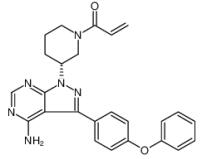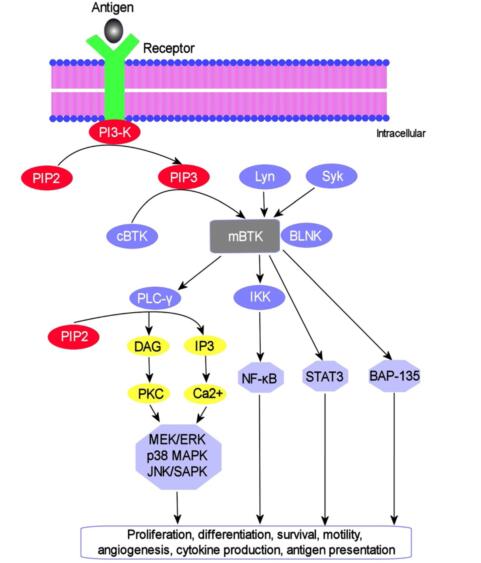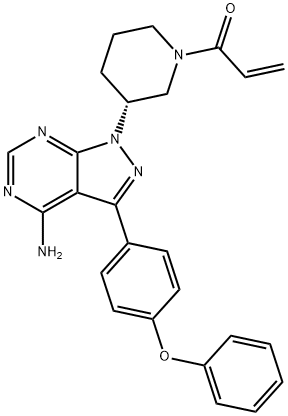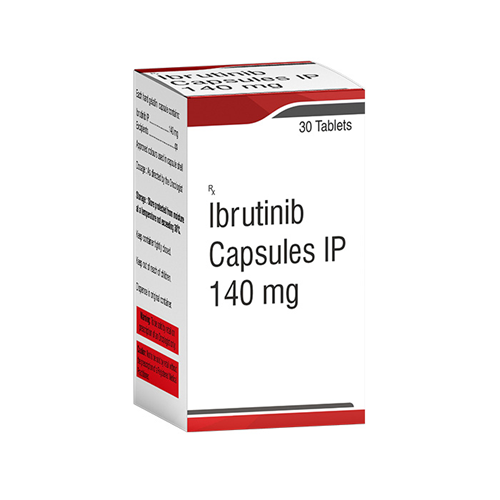What is Ibrutinib?
Feb 10,2020

Ibrutinib (chemical name 1 [(3R)-3-[4-amino-3-(4-phenoxyphenyl)-1Hpyrazolo [3,4-d]pyrimidin-1-yl]-1-piperidinyl]-2-propen-1-one) is a first-in-class,potent, orally administered covalently-binding inhibitor of BTK.[1]
Ibrutinib is a potent inhibitor of BTK that binds covalently to Cys-481 in the active site of BTK, resulting in inhibition of kinase activity. Ibrutinib does have significant activity against 19 other kinases, including seven with a cognate cysteine residue. These include BLK, BMX, ITK, TEC, EGFR, ERBB2, and JAK3. [2]


Ibrutinib has shown significant activities across a variety of B-cell neoplastic disorders and autoimmune diseases in preclinical models and clinical trials. The drug is indicated for the treatment of certain haematological malignancies, including chronic lymphocytic leukaemia (CLL)/small lymphocytic lymphoma (SLL). Induction of apoptosis in vitro is modest, and ibrutinib also blocks signaling and activation in response to BCR and CD40 pathway stimulation, and disrupts the protective effect of stromal cell co-incubation. Ibrutinib can also block integrin-mediated adhesion to fibronectin, as well as signaling and homing in response to CXCL12 and CXCL13. Secretion of the cytokines CCL3 and CCL4, normally stimulated by BCR activation, is also markedly reduced by ibrutinib. Ibrutinib may work by modulating the interaction between CLL cells and the microenvironment, rather than by direct cytotoxicity. [3]
Ibrutinib is rapidly absorbed, has a high oral plasma clearance and a high apparent volume of distribution at steady state. Pharmacokinetic (PK) parameters were not dependent on dose, study, or clinical indication. The fasting state was characterized by a 67% relative bioavailability compared with the meal conditions used in the trials. Body weight and co-administration of antacids marginally increased the volume of distribution and the duration of absorption, respectively. The linear model indicated that the compound’s PK was dose independent and time independent. [4]
Ibrutinib is a high hepatic extraction compound whose elimination is predominantly via the CYP3A4 metabolism with minor involvement of CYP2D6. Both CYP3A and CYP2D6 are part of the cytochrome 450 enzymatic machinery in the liver, being the most significant CYP pathways in the oxidative biotransformation of numerous medications. Interactions between ibrutinib and drugs influencing CYP3A4 are of clinical significance. [5]
To date, ibrutinib remains the only BTK inhibitor registered for several lymphoproliferative disorders, being approved by the U.S. Food and Drug Administration (FDA).
References
1.Wiestner A. The role of B-cell receptor inhibitors in the treatment of patients with chronic lymphocytic leukemia[J]. Haematologica. 2015, 100:1495–507.
2.Burger JA, Styles L, Kipps TJ. Ibrutinib for chronic lymphocytic leukemia[J]. N Engl J Med. 2016, 374:1594–5.
3.Waldron M, Winter A, Hill BT. Pharmacokinetic and Pharmacodynamic considerations in the treatment of chronic lymphocytic leukemia: Ibrutinib, Idelalisib, and Venetoclax[J]. Clin Pharmacokinet. 2017, 56:1255–66.
4.de Vries R, Smit JW, Hellemans P, et al. Stable isotope-labelled intravenous microdose for absolute bioavailability and effect of grapefruit juice on ibrutinib in healthy adults[J]. Br J Clin Pharmacol. 2016, 81:235–45.et al.
Finnes HD, Chaffee KG, Call TG, et al. Pharmacovigilance during ibrutinib therapy for chronic lymphocytic leukemia (CLL)/small lymphocytic lymphoma (SLL) in routine clinical practice[J]. Leuk Lymphoma. 2017, 58:1376–83.
You may like
Clinical Application Research of Sertraline
Dec 19, 2025
Application research of Ceftiofur hydrochloride
Dec 18, 2025
Related articles And Qustion
Lastest Price from Ibrutinib manufacturers
Ibrutinib

US $5.00-0.50/KG2025-06-05
- CAS:
- 936563-96-1
- Min. Order:
- 1KG
- Purity:
- 99% hplc
- Supply Ability:
- 500TONS
Ibrutinib

US $0.00/g/Bag2025-04-21
- CAS:
- 936563-96-1
- Min. Order:
- 25g
- Purity:
- 97%-103%
- Supply Ability:
- 10KGS





